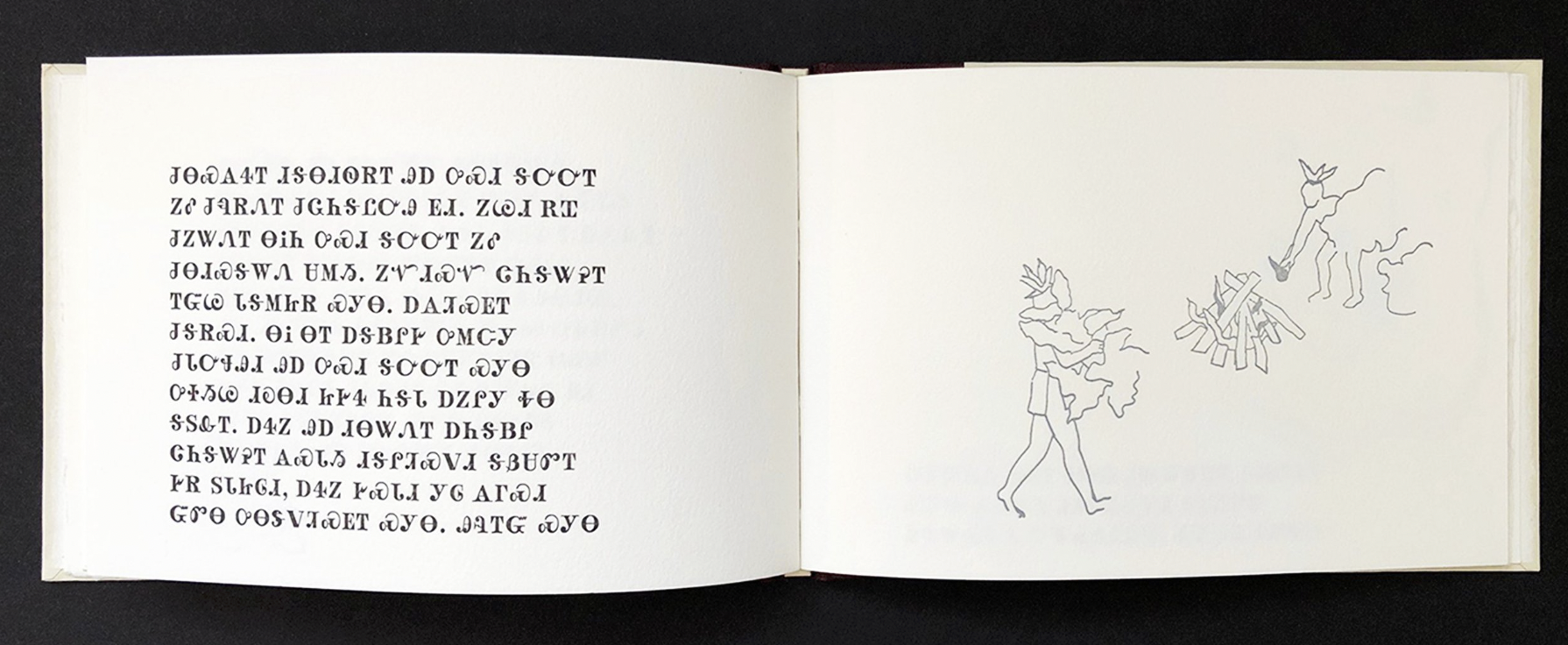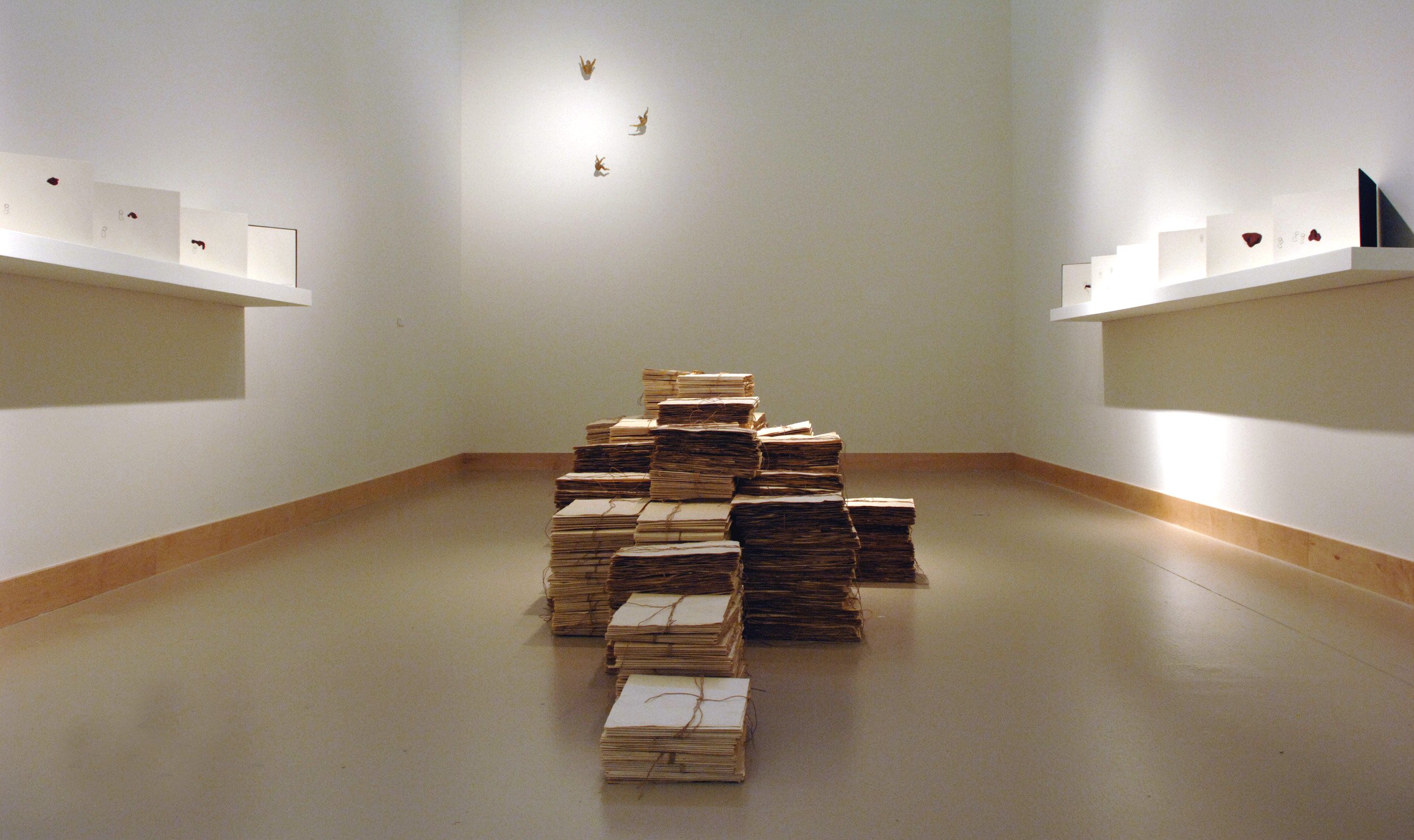
SEQUOYAH’S CHEROKEE SYLLABARY
an endangered Indigenous language
The Cherokee language has endured, in spite of the trauma to which colonists and the U.S. government subjected its speakers. This is in large part due to Sequoyah, a Cherokee silversmith and scholar, who gave the Cherokee people a writing system in the early 19th century. The Cherokee syllabary is composed of eighty-five symbols, each one representing a syllable. This system was completed in 1821, after twelve years of work and is one of only a few written languages developed by one person.
The original form of the syllabary, as designed by Sequoyah, was in cursive symbols. In order to print the language it was necessary to cast typeface in lead, employing characters adapted from the Roman alphabet. The creation of the typeface led to the printing, beginning in 1828, of the Cherokee Phoenix (ᏣᎳᎩ ᏧᎴᎯᏌᏅᎯ), a Cherokee–English newspaper. The paper was printed until 1835 at New Echota, the capital of the Cherokee Nation, in what is now North Georgia. In that year the Georgia Guard confiscated the paper’s printing press and burned its office down. The forced Removal of the Cherokee people from their homeland had begun with the destruction of their capital and the symbols of their culture and language.
Cherokee, like hundreds of Indigenous languages around the world, is endangered. A survey begun by the Cherokee Preservation Foundation in 2005 identified 460 fluent speakers living in Cherokee communities, and 72 percent of them were over 50 years old. In ten years the number of fluent speakers in western North Carolina diminished by over half. There are approximately 200 fluent speakers now.
Much more than words is lost when a language dies. Language, the spoken expression of thought, reflects the culture of the speaker in subtle ways. Native American languages derive from a distinct worldview and cosmology, one that did not evolve from a Judeo-Christian heritage. Many expressions and words in one language can never be translated exactly into another. The loss of Native American languages and culture is due in large part to forced assimilation, especially the brutal punishment inflicted on Native children in Indian Boarding Schools. My grandparents were sent to Carlisle Indian School in Pennsylvania and were stripped of their culture and language in cruel ways. As a result, neither of them spoke the language to their children, to protect them from similar punishment and ridicule.
Spearfinger, limited edition, special collections artist's book. 18pt Cherokee syllabary letterpress type. 16 pages, printed on Arches Text paper.
In recent years the Eastern Band of Cherokee, in partnership with the Cherokee Studies Department at Western Carolina University, has made a concerted effort on behalf of the written and spoken language. The Cherokee Language Revitalization Project supports the teaching of Cherokee at WCU and on the Qualla Boundary, the present day home of the Eastern Band of Cherokee.
Cut paper illustrations for language instruction books in collaboration with Cherokee Studies at Western Carolina University.
THE PILGRIMAGE RIBBON
This installation explores journeys and the loss of Native American Culture.
Accordion books reference Codex Boturini, which told the story of the Aztec’s journey to find a home. These two codices (each eleven feet long) represent my own journey during an eleven year period, and the journey we all have in common, as we make our way through life, its foibles, our foibles - vulnerability expressed by the negative space in which the figures and shapes exist.
Our paths dip and wind through encounters, exploration, danger, disappointment; eventually straying into uncharted areas of ourselves.






